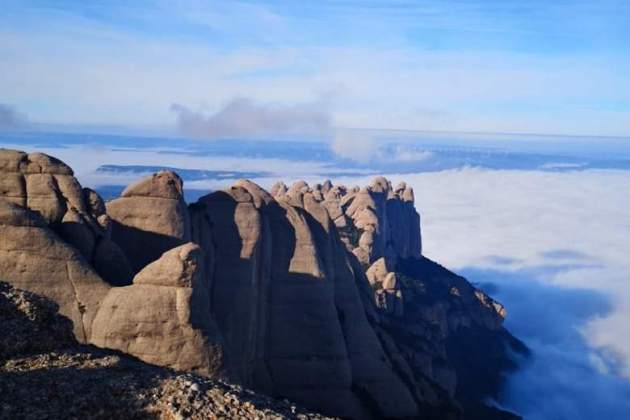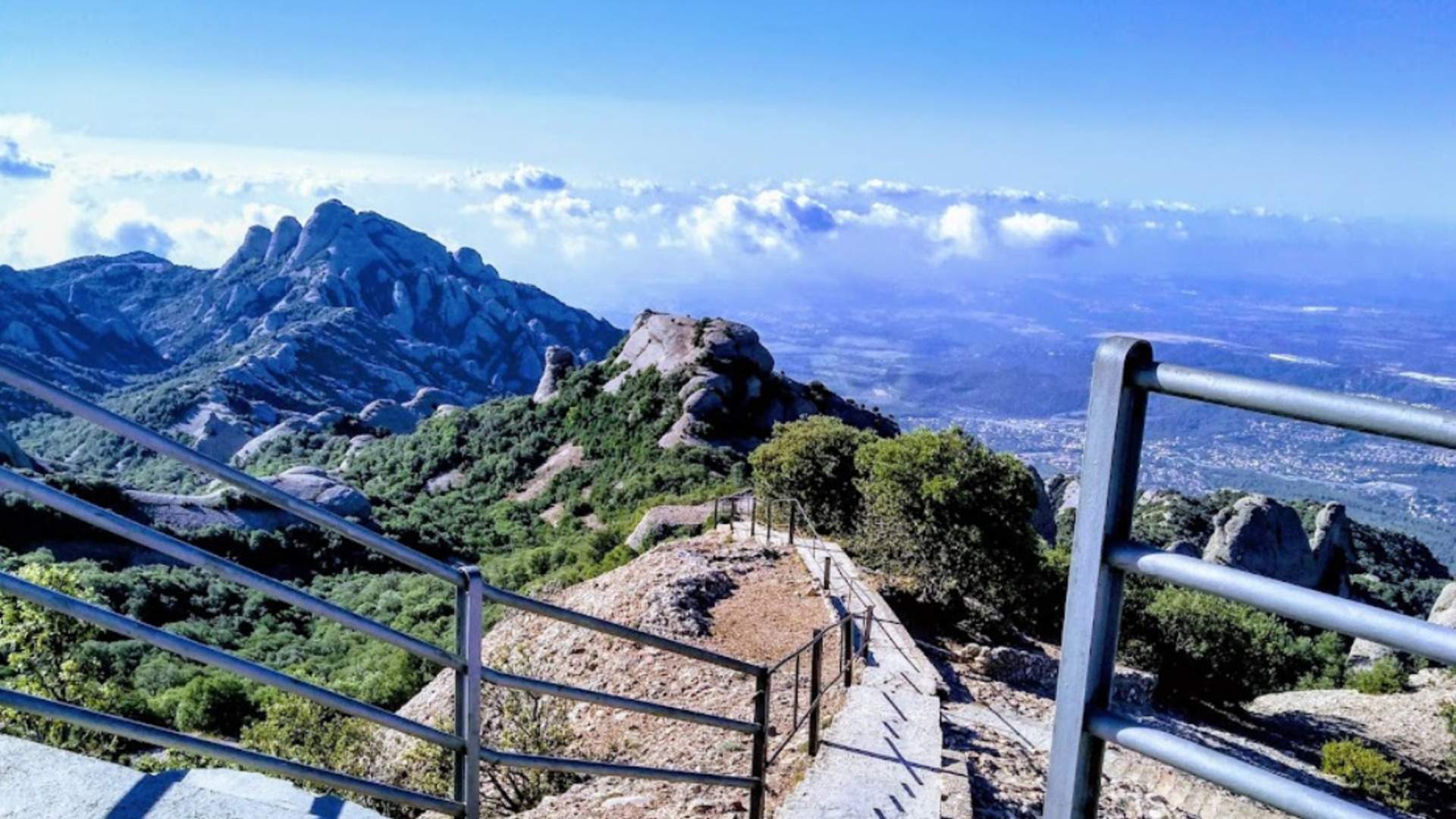Without a doubt, Catalonia has a lot to offer for people who love to get high on hills: breathtaking landscapes and beautiful routes at all levels of challenge. You could say it's a hiker's paradise. But there can be a problem: when it comes to getting to where the trail starts, you often have to take a car. Today, though, we present one of the glorious exceptions: a brilliant day trip, on one of the best known mountain massifs near Barcelona. And less than an hour and a half from the city by public transport!
Sant Jeroni, a route near Barcelona that you can reach by public transport
Without a doubt, one of the first places that comes to mind when we think of an excursion near Barcelona is the mountain of Montserrat, one of the most emblematic and unique places in Catalonia. It offers a series of different hiking routes, with varying levels of difficulty and duration. Among the different options, today we will talk about one of the classics, the ascent to Sant Jeroni.
Sant Jeroni is the highest peak on the Montserrat mountain, at 1,236 metres. This excursion, in addition to starting at the historic Monastery of Montserrat, offers access to one of the most beautiful areas of this extraordinary mountain, where you can enjoy panoramic views, contemplate the elegant rock formations up close and even see groups of wild goats.

How to get to Montserrat by public transport or by car
To do the Sant Jeroni trip from Barcelona, you first have to get to the starting point at the Monastery of Montserrat. By public transport, that means a train ride, followed by either an aerial cable car (aeri) or a rack railway (cremallera) to take you up the mountain. Trains leave from Plaça Espanya, where you have to find the Ferrocarrils de la Generalitat de Catalunya (FGC) station in the underground complex and then take the R5 line towards Manresa. This train runs once an hour, and any train from the 8:36am departure onwards will connect you to both the cable car terminus and the rack railway terminus without much of a wait. But note that you get off at different stops for the cable car and the rack railway.
- Montserrat aerial cable car: The fastest way to get there, with only a 5-minute journey. Get off the train at the Monistrol-Aeri stop. The general return ticket costs around 13.50 euros. But beware, if you suffer from vertigo it might not be the ideal option for you!
- Montserrat rack railway: Get off at Monistrol-Vila stop. The journey up the mountain takes about 15 minutes and runs every 20 minutes. The return ticket for an adult is 14 euros.
If you come by car, there is a 400-space car park open 24 hours a day next to the Monastery. Of course, these places have a price of 7 euros and, what's more, they fill up very quickly on weekends and holidays. So, if you want to secure your place, you'll have to be early. We recommend leaving cars at the free parking next to the Monistrol-Vila station or at the Monistrol-Aeri station and comfortably going up to the Monastery with the rack rail or cable car.
On the Montserrat mountain there are also funicular railways which can give you other journey options. On this route, we don't use them.
The route to Sant Jeroni itself
Once you are at the Monastery, you can start your hikje. First, the key stats and technical information:
- Type of route: Loop
- Difficulty: Medium
- Elevation: 681m
- Maximum altitude: 1,269 m
- Minimum altitude: 734 m
- Distance: 15 km
- Duration: Approximately 5 hours (Monastery- Sant Jeroni- Monastery))
From the esplanade of the Montserrat Monastery, you head for the Camí de Sant Miquel (Sant Miquel path). If you are facing towards the mountain, this goes route heads off to your left, and is the most gradual ascent from the Monastery, going round the seaward end of the mountain massif. The path first takes you to the old Chapel of Sant Miquel. You then continue along the Camí de les Ermites (Hermitages path), passing through the Pla de les Tarantulas (Tarantula flat) and continue to the chapel of Sant Joan. Next, we take the new Cami de Sant Jeroni (Sant Jeroni path), also passing by the Chapel of Sant Jeroni and finally to the top of the Miranda (lookout) of Sant Jeroni.
Finally, you return but fork to the left a few minutes after leaving the Miranda to complete your circuit, taking the quicker route back to the Monastery via the Torrent de Santa Maria, where you take the Camí Vell (old path) de Sant Jeroni until reaching the religious centre again.

